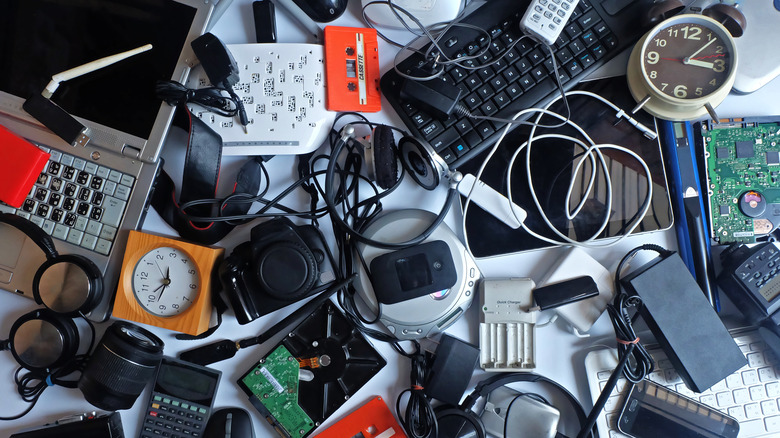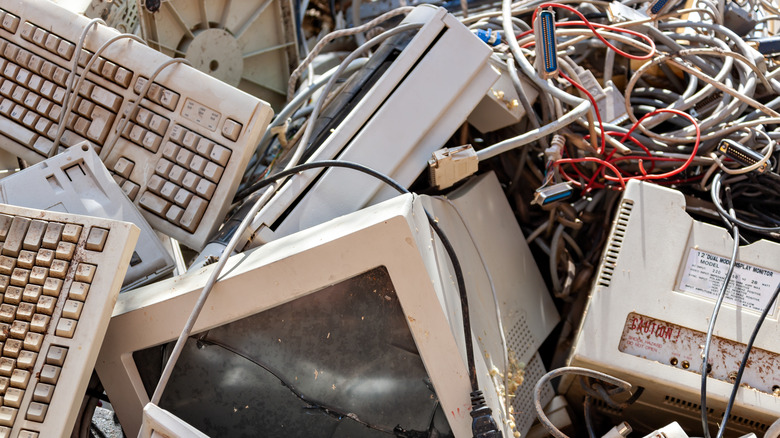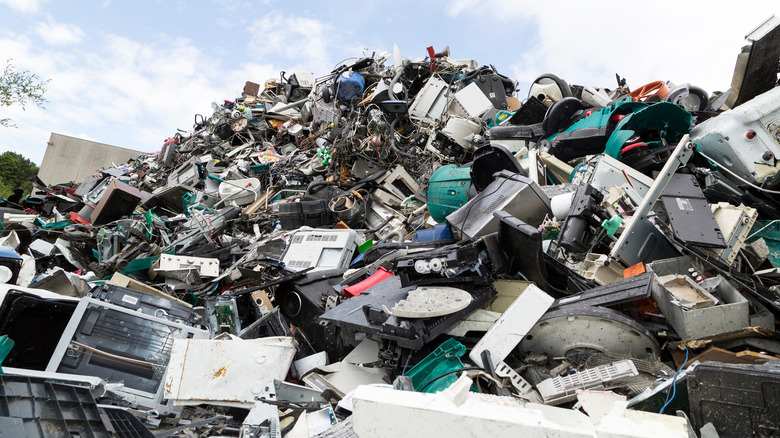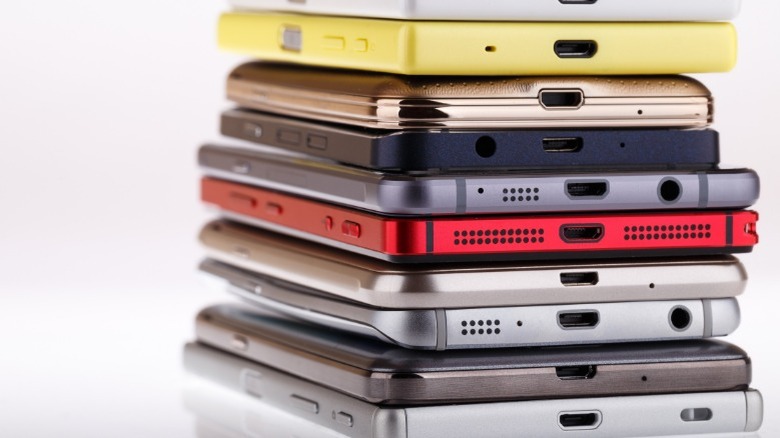E-Waste Is More Important Than You Realized
According to the United Nations, 50 million tons of electronic waste are created each year. This is comprised of old devices or electronics that have broken or stopped working. Even though there is so much of this waste accumulating each year, with plenty of usable precious metals within them to be recycled, the mining of these metals continues to drive down available resources. For example, there is possibly as much as 7% of the world's gold sitting in this ever-growing e-waste, the UN notes.
Further, less than 20% of e-waste is recycled, making it difficult for the precious metals within them to be put to better use rather than being stuck in a landfill. This loss of precious metals is just another effect of e-waste, which also can have effects on environmental pollution and human health. Because there are few formal e-waste recycling programs, especially in third-world countries, informal recycling takes place instead. However, this has been found to have many detrimental impacts on health, as explained by the Population Reference Bureau.
The problem with e-waste
There are many negative impacts that come along with the issue of e-waste. As stated above, these trashed electronics are hosts to tons of precious metals that could potentially run out within the next century if changes are not made. As things stand now, the world is predicted to generate 120 million tons of e-waste by 2050, according to the United Nations, far more than double what is created currently. As precious metals found within the Earth start growing scarce, there is little need to continue mining them when so much is being held in e-waste.
Another issue caused by the growing electronic trash is health problems. Developing countries are at the most risk, despite the fact that many of them have to deal with the e-waste of developed countries. Take India, for example, of which 70% of the e-waste the country deals with is not its own. The risks come from informal recycling methods, many of which involve exposure to toxic substances from the burning of e-waste. In Guiyu, a city in China with the largest amount of e-waste recycling in the world, 80% of the children there suffer from respiratory diseases due to these practices (via Electronics TakeBack Coalition).
Why better recycling programs are needed
While valuable metals like gallium, silver, indium, and more sit in e-waste landfills, there are also ongoing supply chain problems for these metals. As the BBC reports, organizations such as The Royal Society of Chemistry are calling on humanity to mine e-waste for precious metals instead of continuing to mine them from Earth. With new electronics being created all the time, there is a dire need for these metals to be recycled instead of taking resources that are running out.
There are many ways that the current system could be overhauled to become more sustainable. As the UN states, there are multiple solutions that range from designing products to be more durable all the way to buy-back initiatives and "urban mining" to extract metals from the mountains of waste that already exists. This, along with secure recycling programs implemented to reduce the health risks of informal recycling, could make for a sustainable way to manufacture electronic devices in the future.
How to cut back on e-waste
E-waste is a global problem, but as individuals, there are some steps we can take to avoid contributing to the issue as much as possible. One of the most effective ways to cut back on the e-waste your household produces is to break free of annual or biennial upgrade cycles and use the devices you buy for as long as you can.
Smartphones — especially flagship devices — often use hardware that remains reasonably powerful and efficient for years. If you can resist the allure of shiny new phones, you can significantly extend the life of your current smartphone by replacing the battery when it begins to lose capacity. Battery replacement is often less expensive than upgrading (Apple, for instance, charges $69 or $49 for out-of-warranty battery replacement, depending on model) and it can breathe new life into aging devices.
Even when your current device has reached end-of-life — either because new software has outpaced the capabilities of your device's hardware or because the manufacturer has stopped supporting it with new security and OS updates — you can still save it from a landfill by finding a new use for it. For example, an old smartphone could be used as an offline MP3 player for your car, or an old PC could be turned into a home server. Aging hardware is not necessarily useless hardware, and when it comes to keeping e-waste out of landfills, finding new uses for existing devices is an effective strategy that most everyone can carry out.



